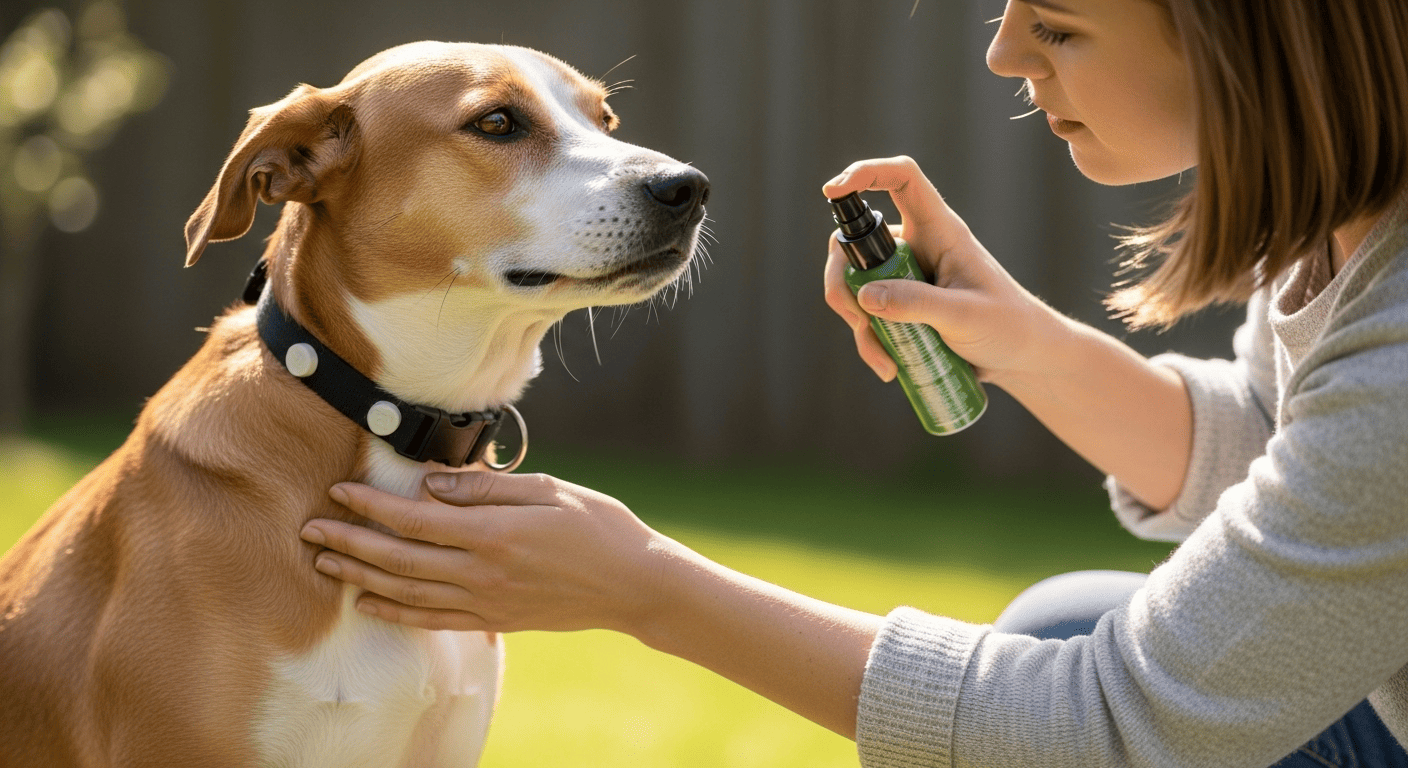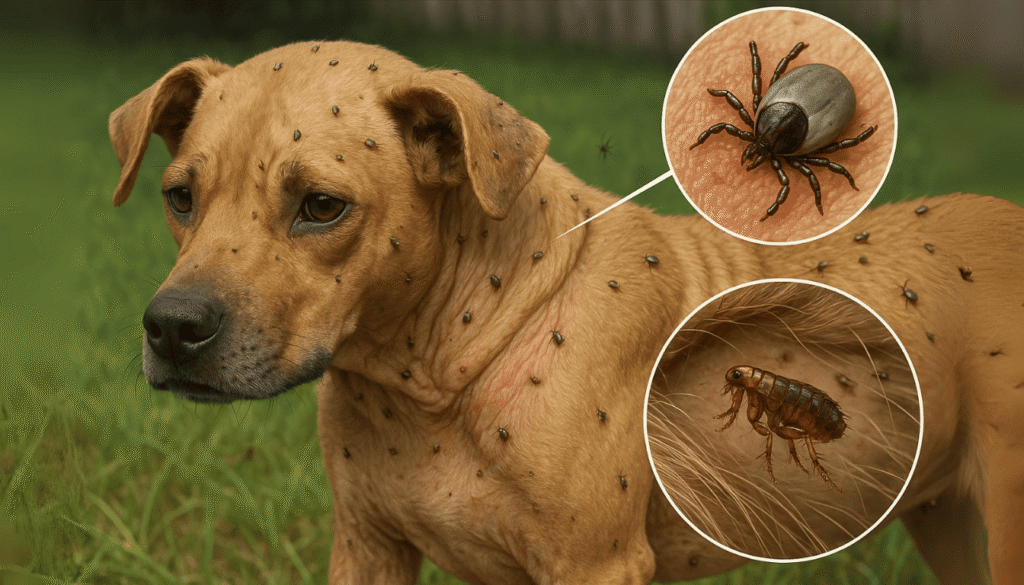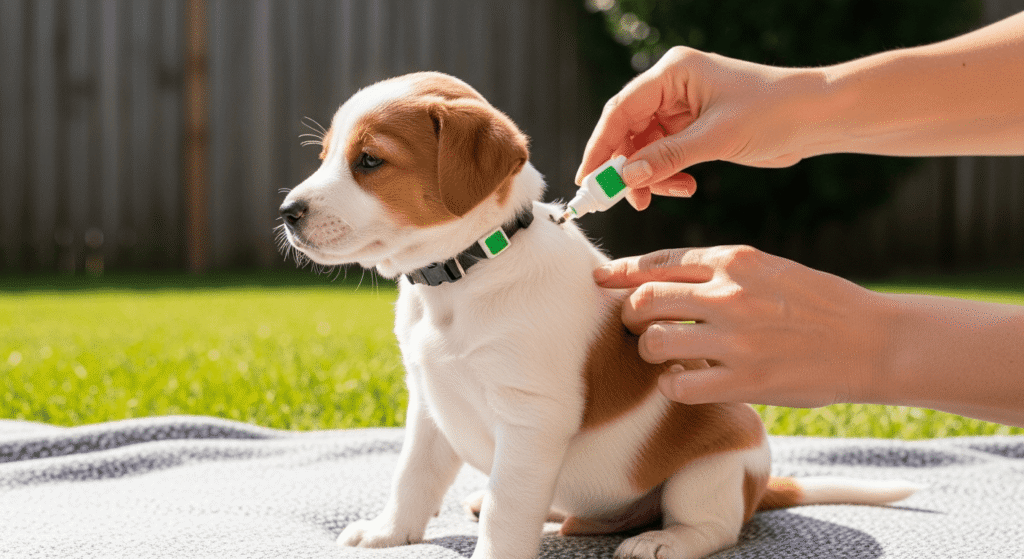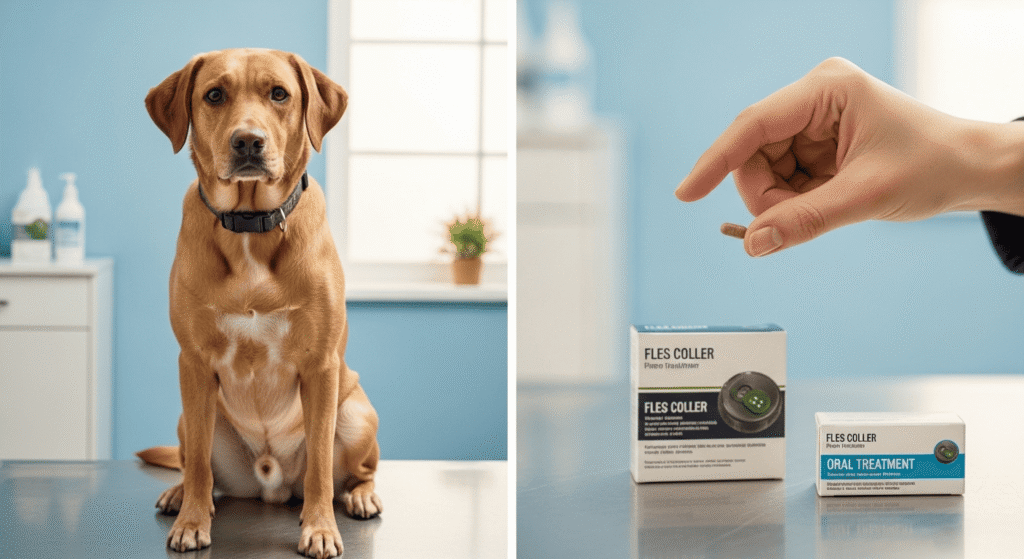As a loving dog owner, ensuring your furry friend is healthy and happy is a top priority. One of the most common and irritating challenges that many pet owners face is dealing with fleas and ticks. These tiny parasites can cause a range of health problems for your dog, from skin irritations to more serious conditions such as Lyme disease or anemia.
So, how to prevent fleas and ticks in dogs? Fortunately, there are several proven methods to keep these pests at bay, ensuring your dog stays safe and comfortable.
In this article, we’ll explore 7 effective and scientifically-backed ways to prevent fleas and ticks on your dog. Whether you’re dealing with an infestation or simply want to avoid the hassle, these strategies will help protect your dog from these troublesome pests.
Why Fleas and Ticks Are a Concern for Dogs
Fleas and ticks are not just annoying they can cause major health problems if left unchecked. Fleas, for instance, can lead to itching, allergic dermatitis, hair loss, and even tapeworm infestations. Ticks, on the other hand, are notorious for transmitting diseases such as Lyme disease, ehrlichiosis, and anaplasmosis, all of which can lead to long-term health problems in dogs.
Fleas: A Persistent Problem
Fleas are tiny blood-feeding insects that inhabit your dog’s skin and coat. Bites may lead to severe itching, hot spots, secondary infection, and allergic responses. Fleas can also carry other parasites, like tapeworms, in certain cases.
Ticks: A Silent Menace
Ticks, being less noticeable than fleas, pose a grave threat to your dog’s health. These parasitic blood-feeders latch onto your dog’s skin, lying low until they transmit life-threatening illnesses to your dog. Ticks are more likely to be found in grassy or wooded areas, and so, outdoor playtime can expose your dog to them.
Understanding how these parasites impact your dog is the first step in their prevention. Now, let’s consider the most effective ways of protecting your dog.
1. how to prevent fleas and ticks in dogs
The best and most reliable method of protecting your dog from fleas and ticks is the use of vet-prescribed preventatives. These come in the form of topical treatments, oral medication, collars, and sprays. They work by either killing fleas and ticks on contact or by making the blood of your dog toxic to these parasites.
Types of Preventatives:
- Topical Treatments: These are applied directly to your dog’s skin, usually at the base of the neck. They may last a month, providing protection.
- Oral Medications: Administered in pill or chewable tablet form, oral medications work systemically to eliminate fleas and ticks.
- Flea Collars: There are also collars that emit chemicals to repel fleas and ticks. Some collars offer continuous protection for months.
- Sprays: Sprays for fleas and ticks are applied directly to your dog’s fur and coat. They’re often paired with other treatments for additional protection.
Discuss with your vet what’s most suitable for your dog’s lifestyle, breed, and size.
2. Make Your Dog’s Surroundings Clean and Parasite-Free
Fleas and ticks can also live in your dog’s environment, and thus, cleanliness of the living environment is key to preventing an infestation. Here are some tips to reduce the population of fleas and ticks in and around your home:
- Vacuum Frequently: Fleas can lay eggs in carpets, rugs, and upholstered furniture. Vacuuming frequently can help remove flea eggs, larvae, and adult fleas from your home.
- Wash Bedding Regularly: Wash your dog’s bedding, toys, and other fabric items they use regularly in hot water. This will help rid them of fleas and ticks that may be hiding.
- Apply Flea-Repellent Products to the Home: Consider applying flea sprays or powders to your home, especially in the parts your dog spends most of its time.
By keeping your dog’s environment clean, you can minimize the chances of flea and tick infestations.
3. Regularly Groom and Check Your Dog
Routine grooming is another important aspect of flea and tick prevention. Not only does it keep your dog’s coat looking shiny and healthy, but it also provides an opportunity to spot parasites early on. During grooming sessions, carefully inspect your dog’s fur for signs of fleas or ticks.
Grooming Tips:
- Brush Your Dog Regularly: Brushing your dog’s coat removes dirt, debris, and any fleas or ticks that may be present. Use a fine-toothed comb to look for fleas, particularly around the ears, neck, and belly.
- Check for Ticks After Outdoor Activities: If your dog has been in the woods or an area with tall grass, check thoroughly for ticks, as they can attach themselves to your dog’s skin without being noticed.
If you do happen to find a tick, remove it using a pair of fine-tipped tweezers so that you don’t leave behind any tick parts. If you’re unsure, your vet can assist with tick removal.
4. Put Your Dog on a Healthy Diet and Boost Your Dog’s Immune System
A strong immune system will allow your dog to naturally repel parasites. A good quality, well-balanced diet full of vitamins and nutrients will support your dog’s overall health and make them stronger in their ability to repel fleas and ticks.
Supplements to Consider:
- Omega-3 Fatty Acids: Allow for healthy skin and coat, which makes it harder for fleas to thrive.
- Garlic (in small quantities): Some believe garlic repels fleas, but be careful since too much garlic is poisonous to dogs. Discuss with your veterinarian before putting garlic in your dog’s food.
- Probiotics: A healthy gut can contribute to better overall health and immunity.
Discuss with your veterinarian before putting any new supplements in your dog’s food to ensure they are effective and safe.
5. Keep Your Dog’s Outdoor Activities Secure
Fleas and ticks prefer grassy and wooded terrain, so limiting your dog’s exposure to these environments will reduce the opportunities for them to pick up parasites. If your dog loves outdoor adventures, follow these guidelines:
- Stick to Well-Manicured Areas: Walk your dog in areas where the lawn is regularly cut and the environment is less likely to be infested with fleas and ticks.
- Avoid Wooded and Overgrown Areas: Fleas and ticks adore tall grasses and heavy vegetation, so avoid these areas, especially during peak flea and tick seasons.
- Put on a Protective Coat: If your dog spends a significant amount of time outdoors in high-risk areas, consider investing in a protective dog shirt or coat. Some coats have tick-repelling treatments.
6. Consider Natural Flea and Tick Repellents
If you prefer something more natural, there are several herbal remedies and essential oils that repel ticks and fleas. These can be found to be effective but may not offer the same degree of protection as pharmaceutical preventatives, so utilize them as part of an integrated approach.
Natural Flea and Tick Repellents:
- Lemon Oil or Cedarwood: Fleas and ticks are repelled by the scent of cedarwood and citrus oils. Combine these oils with water and spray them on your dog’s coat using a spray bottle.
- Neem Oil: Neem oil possesses natural insecticidal properties and can be used to repel fleas and ticks. It can be applied directly to the dog’s skin but needs to be diluted in proportion.
- Apple Cider Vinegar: Spraying a mixture of water and apple cider vinegar on your dog’s coat is another natural repellent.
Note: Before using essential oils, always check with your veterinarian because some oils are harmful to dogs when not used appropriately.
7. Establish Regular Vet Checkups
Flea and tick prevention is not only about repellents and treatments it’s about staying ahead of any problems before they start. Regular veterinary check-ups can diagnose and treat flea and tick issues early, before they become serious. Your veterinarian will also be best placed to recommend the most appropriate flea and tick preventatives for your dog based on their lifestyle and health.
Why Regular Vet Visits Are Important:
- Early Detection: If your dog does end up with fleas or ticks, your vet can help remove them and provide treatments to have your dog back to normal in no time.
- Personalized Recommendations: Based on your dog’s breed, age, and activity level, your vet can suggest the most effective products for flea and tick prevention.
Conclusion: Keep Your Dog Safe and Healthy
Fleas and ticks are more than a nuisance they can cause some severe health issues in your dog. Fortunately, by using tried and tested methods such as preventative treatments, regular grooming, keeping your surroundings clean, and making your dog’s immune system robust, you can keep these unwanted parasites under control.
If you’re unsure what’s best for your dog when it comes to flea and tick prevention, don’t hesitate to reach out to your veterinarian for personalized advice. With the right approach, you can keep your dog flea- and tick-free and allow them to live a healthy, happy life.
If you liked this article, please share it with fellow pet owners! And as usual, if you have any questions or need recommendations on flea and tick prevention for your dog, don’t wait to reach out to your vet today. Being proactive will keep your dog protected and safe all year long.
Yuns Legdm is a passionate advocate for pet care and the founder of this website, dedicated to providing valuable information for fellow pet lovers and veterinary professionals worldwide. With a deep love for animals, Yuns created this platform to connect passionate pet owners with expert insights from veterinarians around the globe.
This website grows with you—the passionate pet owners and veterinary experts—creating a trusted space where knowledge, experience, and love for animals come together. Whether you’re seeking advice on pet health, nutrition, or general well-being, this platform is here to support you on your journey of responsible and loving pet care.





